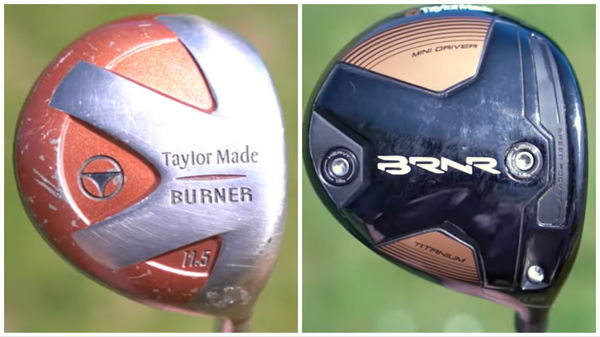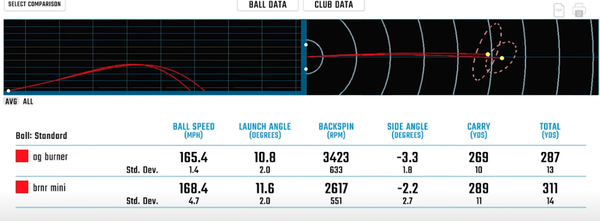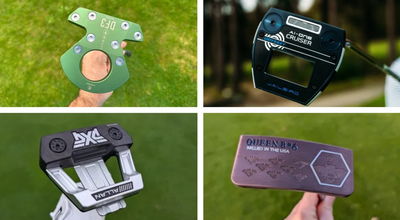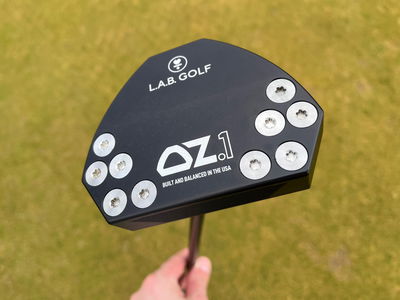TaylorMade BRNR Mini vs. 94 Burner: How do they compare?
TaylorMade's 1994 Burner driver was iconic for its time, but how will it compare to the brand's new and updated BRNR Mini driver?

The 1995 Burner driver from TaylorMade is one of the most recognisable clubs in the game. A favourite amongst professionals around the world, the club was much-loved thanks to its unusually shaped bubble shaft and bright orange head.
With the release of the BRNR Mini driver, TaylorMade has once again tried to shake up the market with a product that has already found its way into the bags of high-profile players like Adam Scott and Tommy Fleetwood.
Filling a gap between driver and 3-wood, the BRNR Mini is a versatile tool that can be utilised in a range of different ways, be it off the tee or the fairway.
While the 1994 Burner was first released as an out-and-out driver, its smaller head size is more reminiscent of a modern-day 5-wood.
Used by Jose Maria Olazabal to win the 1994 Masters, how would the technology of yesteryear compare to today's modern standards?
To find out, we put both clubs head to head out on the course at Mannings Heath Golf and Wine Estate and on the simulator at Grey's Golf.
RELATED: TAYLORMADE BRNR MINI DRIVER REVIEW
What were the main takeaways from testing? Well, it's fair to say that TaylorMade clubs have improved a great deal in terms of both distance and forgiveness in the last 30 years.
TAKE A LOOK AT HOW THE TWO DRIVERS COMPARED ON GC QUAD

While the 2023 BRNR Mini beating its great grandpa for distance is by no means surprising, what we did notice was that there has only been a marginal increase in ball speed on the purest of centre strikes.
Testament to the quality and construction of the 1995 Burner, struck out of the middle, it still packs a hell of a punch. However, what we did notice was that the spin rates that it produced did fluctuate massively between shots.
Ranging from between 3,000 to 5,500 rpm, due to its flexible shaft and small head, the Burner offered a great deal less forgiveness than the new and improved BRNR Mini.
While noticeable on GC Quad, the improved forgiveness of the BRNR Mini became even more apparent when we took it out on the course.
From off-centre strikes, the BRNR Mini had no problems finding the fairway, and even when struck out of the toe or heel, it maintained solid ball speeds and good carry distance.
In contrast, the original Burner proved somewhat more difficult to keep in the short grass. Mis-hits were punished severely with the increased spin taking our ball to places we didn't really want to go.
So, will we be switching back to the 1995 Burner next time we head out for our monthly medal? No, probably not. But we would have likely bet on that being our answer before we teed it up.
The main takeaway from this experiment, though, was just how impressive the improvement in driver performance has been since Olazabal slipped on the famous green jacket in 1994.
Developments in materials, head sizes, face constructions and a number of other factors have made modern drivers incredibly easy to hit compared to what was on the market 30 years ago. And it's this improvement which begs us to ask another question. Can this improvement be continued? Well, check back with us in 30 years, and we will hopefully be able to tell you.
Sponsored Posts
Latest News
![Lexi Thompson [Instagram]](https://cdn.golfmagic.com/2025-04/le122.jpg?width=400)










